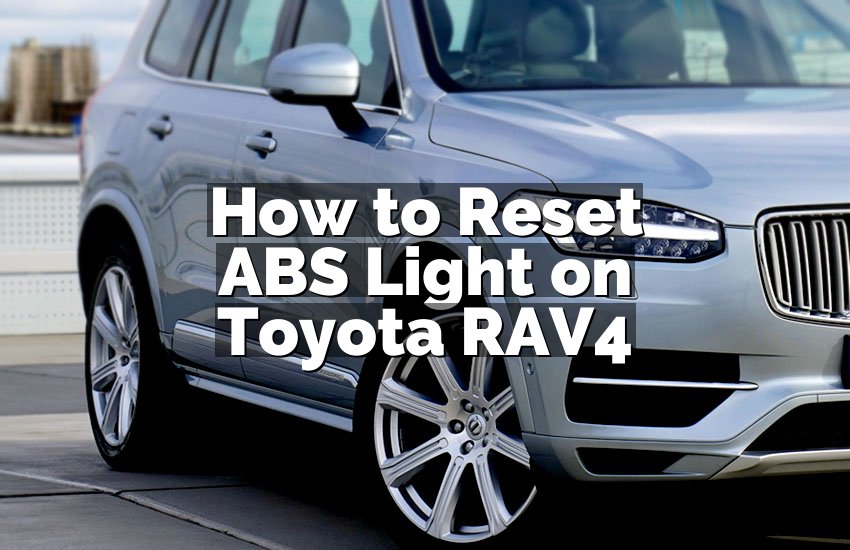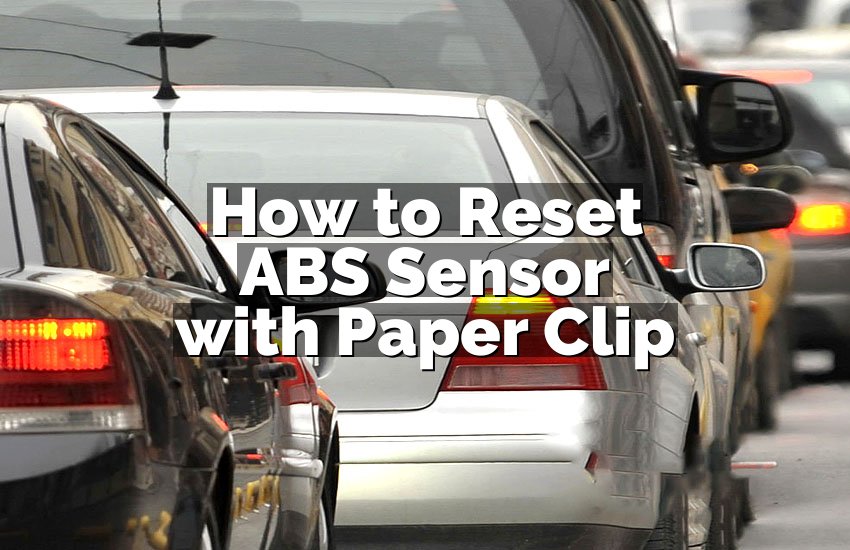It is not recommended to charge a car battery while it is still connected due to the risk of electrical damage or injury. Charging the battery while connected can cause a surge of power that may damage the vehicle’s electrical system or even start a fire.
It is safer to disconnect the battery before charging it to avoid any potential hazards. Taking this precaution ensures that the charging process is done in a controlled and secure manner, preventing any harm or damage. So, always remember to disconnect the car battery before charging it to ensure safety and avoid any potential risks.
Why Charging A Car Battery While It’s Still Connected Is Controversial
Why Charging a Car Battery While It’s Still Connected is Controversial
Charging a car battery while it’s still connected is a topic of much debate among car enthusiasts and experts. While some argue that it can be done safely, others strongly discourage it due to safety concerns and the potential for damage to the battery and the vehicle.
Safety Concerns
Charging a car battery while it’s still connected can pose several safety risks. First and foremost, there is a risk of electric shock. The battery carries a high level of voltage, and even a small mistake during the charging process can lead to serious injuries. Additionally, there is a risk of sparks or an explosion, especially if there is any fuel present in the vicinity of the battery. These safety concerns should not be taken lightly, and it is advisable to disconnect the battery before attempting to charge it.
Potential Damage To The Battery And Vehicle
Another reason why charging a car battery while it’s still connected is controversial is the potential for damage to both the battery and the vehicle. When the charging process is initiated, the battery generates hydrogen gas. This gas can accumulate if the battery is not adequately ventilated, leading to a potential explosion. Furthermore, charging the battery while it’s still connected can put strain on the vehicle’s electrical system, causing damage to other components such as the alternator or voltage regulator.
- The risk of electric shock
- Sparks or explosion
- Damage to battery
- Damage to the vehicle’s electrical system
In conclusion, charging a car battery while it’s still connected is a controversial practice due to safety concerns and the potential for damage to both the battery and the vehicle. It is always recommended to disconnect the battery before attempting to charge it, to minimize the risks involved and ensure the longevity of the battery and the vehicle’s electrical system.
Understanding The Charging Process
When it comes to understanding the charging process, it’s important to consider safety. Charging a car battery while it’s still connected can pose risks of electrical hazards and damage to the vehicle’s electrical system. It’s recommended to disconnect the battery before charging to ensure safe and effective charging.
Understanding the Charging ProcessCharging a car battery while it’s still connected is a common question, and understanding the charging process is crucial for proper battery maintenance. Let’s delve into how car batteries are charged and the types of chargers available.How Car Batteries are ChargedCar batteries are charged through a process called electrolysis, which involves passing an electric current through the battery to reverse the chemical reactions that occur during discharge. This charging process restores the battery’s chemical composition, ensuring it maintains a sufficient charge to power the vehicle’s electrical systems.Types of Chargers AvailableThere are various types of chargers available for car batteries, each suitable for different needs. Some common types include:– Trickle Chargers: Provide a slow, steady charge, ideal for long-term maintenance. – Fast Chargers: Deliver a quick burst of charge for immediate use. – Smart Chargers: Monitor battery condition and adjust the charging rate accordingly for optimal performance and longevity.Understanding the different charging methods and their applications can help car owners make informed decisions when it comes to maintaining their vehicle’s battery health.Disconnecting The Battery Before Charging
Disconnecting the battery before charging is essential to ensure safe and effective charging of your car battery. It is important to follow proper steps in order to avoid any potential hazards and damaging the electrical components of your vehicle.
Importance Of Disconnecting
Disconnecting the car battery before charging is crucial for several reasons:
- Prevents electrical surges: Unplugging the battery protects both the charger and your car’s electrical system from any potential electrical surges, ensuring a smooth charging process.
- Avoids damage to sensitive components: Certain sensitive electronic components in your vehicle, such as the onboard computer and entertainment systems, can be damaged if exposed to high voltages during charging.
- Enhances safety: Disconnecting the battery reduces the risk of accidental shorts, sparks, and fires during the charging process, keeping you and your vehicle safe.
Steps To Properly Disconnect
Follow these steps to correctly disconnect your car battery before charging:
- Gather the necessary tools: Depending on your car model, you may need a wrench or a socket set to loosen the battery terminal connections.
- Locate the battery: In most vehicles, the battery is located under the hood. Consult your car manual if you are unsure about its location.
- Identify the positive and negative terminals: The positive terminal is typically marked with a (+) symbol, while the negative terminal is marked with a (-) symbol.
- Start with the negative terminal: Loosen the nut on the negative terminal using the appropriate tool, then carefully remove the cable from the terminal.
- Proceed with the positive terminal: Loosen the nut on the positive terminal, and disconnect the cable in a similar manner as the negative terminal.
- Double-check connections: Before charging your battery, ensure that both terminals are properly disconnected and do not have any contact with each other or any metal surfaces in the engine bay.
Risks Of Charging A Connected Battery
Charging a car battery while it’s still connected can pose risks, including potential electrical shocks, short circuits, and damage to the vehicle’s electrical system. It is advisable to disconnect the battery before charging to ensure safety.
Possibility Of Electric Shock
Charging a car battery while it’s still connected can pose several risks. One of the main concerns is the possibility of electric shock. When a battery is connected to the vehicle’s electrical system, there is a continuous flow of electricity running through various components. This means that there is a potential for electrical current to be present when attempting to charge the battery.Risk Of Damage To The Vehicle’s Electrical System
Another significant risk of charging a connected car battery is the potential damage to the vehicle’s electrical system. The electrical system in a car is designed to handle a specific amount of voltage from the battery. When you connect the battery to a charger while it is still connected to the vehicle, it can lead to an overload of electrical current, which may exceed the system’s capacity.This excess current can damage sensitive electrical components such as the alternator, fuses, wiring, and even the vehicle’s computer systems. The repairs for such damages can be frustratingly expensive and time-consuming.If you’re unsure about whether or not it’s okay to charge a car battery while it’s still connected, it’s highly recommended to consult the vehicle’s owner manual or seek advice from a professional mechanic. They can provide you with the most accurate information and guidance related to your specific vehicle make and model.In conclusion, charging a car battery while it’s still connected comes with serious risks. The possibility of electric shock and the risk of damage to the vehicle’s electrical system should not be taken lightly. It’s essential to prioritize safety and follow the manufacturer’s recommendations for disconnecting the battery before attempting any charging procedures.Safe Alternatives To Charging A Connected Battery
Charging a car battery while it’s still connected can pose risks, such as electrical surges or damage to the vehicle’s electrical system. To ensure safety, it’s advisable to follow safe alternatives like disconnecting the battery or using a battery charger that incorporates protection features.
It’s important to understand the risks involved in charging a car battery while it’s still connected. However, there are safe alternatives to this process that can help you avoid any potential dangers. Let’s explore two safe methods you can use when dealing with a connected car battery.Using Portable Jump StartersWhen dealing with a connected car battery, using a portable jump starter can be a safe and effective option. This device allows you to provide a quick jolt of power to the car’s battery without the need for a direct connection to an external power source. Portable jump starters are compact and easy to use, making them a convenient solution for charging a connected battery.Use of Battery TendersAnother safe alternative for charging a connected car battery is the use of battery tenders. These devices are designed to provide a slow, steady charge to the battery over an extended period of time. By using a battery tender, you can safely maintain the charge of a connected battery without risking any electrical mishaps.In conclusion, using portable jump starters and battery tenders are safe alternatives to charging a connected car battery. These methods can help you avoid potential hazards while ensuring that your car’s battery remains charged and functional.How To Safely Charge A Car Battery
You can safely charge a car battery while it’s still connected by following some precautions. Make sure the charging area is well-ventilated, and avoid creating sparks or using devices with a high amperage. Additionally, check for any signs of damage or corrosion on the battery and cables before charging.
Charging a car battery while it’s still connected is a common question among car owners. It can be tempting to take shortcuts and charge the battery without disconnecting it, but doing so can be risky and potentially dangerous. In this guide, we’ll walk you through the step-by-step process of safely charging a car battery, as well as the precautions you should take to avoid any mishaps.Step-by-step Guide To Charging
To safely charge a car battery while it’s still connected, follow these steps:- Start by gathering the necessary tools and materials. You’ll need a battery charger, a wrench or pliers to disconnect the cables, safety goggles, and gloves for protection.
- Before starting, ensure that the engine is turned off and the key is removed from the ignition. This will prevent any accidental starting of the vehicle during the charging process.
- Put on your safety goggles and gloves to protect yourself from any potential battery acid spills or sparks.
- Use the wrench or pliers to loosen the nut on the negative cable (usually marked with a “-“) and disconnect it from the battery terminal. Repeat this step for the positive cable (usually marked with a “+”).
- Set the battery charger to the appropriate settings for your battery type. This information can usually be found in the battery’s user manual or on the charger itself.
- Connect the charger’s positive cable (usually red) to the positive terminal on the battery and the negative cable (usually black) to the negative terminal.
- Plug in the battery charger to a power source and turn it on. The charger will begin the charging process, which can take several hours depending on the battery’s charge level.
- Monitor the charging process to ensure that there are no sparks or unusual sounds. If you notice anything out of the ordinary, stop the charging immediately and seek professional assistance.
- Once the battery is fully charged, turn off the charger and unplug it from the power source.
- Reconnect the positive cable to the positive terminal, followed by the negative cable to the negative terminal. Ensure that the connections are secure.
- Double-check that all tools and equipment are removed from the working area, and dispose of any used materials properly.
- Start the engine and check if the battery is functioning properly. If the vehicle starts without any issues, then the charging process was successful.
Precautions To Take
While charging a car battery, it’s crucial to take certain precautions to ensure your safety and prevent any damage to the vehicle. Here are some precautions you should keep in mind:- Always wear safety goggles and gloves to protect yourself from battery acid and electrical sparks.
- Make sure the charging area is well-ventilated to prevent the buildup of flammable gases emitted by the battery.
- Avoid smoking or using any open flames near the battery, as it can ignite the gases and cause an explosion.
- Do not charge a damaged or leaking battery. If you suspect any damage, it’s best to consult a professional.
- Follow the instructions provided with your battery charger and ensure it’s suitable for the type of battery you have.
- Never leave the battery unattended while charging to minimize the risk of accidents.
Proper Battery Maintenance And Care
Proper battery maintenance and care is essential for the longevity and optimal performance of your car battery. By regularly inspecting and cleaning your battery, you can prevent potential issues and ensure it works effectively when you need it most. Additionally, knowing when to replace your battery is crucial to avoid unexpected breakdowns. In this article, we will discuss two essential aspects of battery maintenance and care: regular inspection and cleaning, and knowing when to replace the battery.
Regular Inspection And Cleaning
Regular inspection and cleaning of your car battery help prevent corrosion, ensure proper electrical connections, and extend its lifespan. Follow the steps below to perform a simple yet effective battery inspection and cleaning.
- Before starting, make sure the engine is turned off, and all electrical components, such as headlights and the radio, are also switched off.
- Inspect the battery for any visible signs of corrosion, such as white or greenish deposits around the terminals or cables.
- If corrosion is present, prepare a mixture of baking soda and water (1 tablespoon of baking soda in 1 cup of water) and use a brush to scrub off the corrosion gently.
- Carefully disconnect the battery cables, starting with the negative (-) cable first, and then remove the positive (+) cable.
- Clean the battery terminals and cable ends using a battery cleaning brush or a wire brush, ensuring all corrosion is removed.
- Rinse the terminals and cable ends with clean water and dry them thoroughly using a clean cloth.
- Apply a thin layer of petroleum jelly or terminal protectant spray to the terminals and cable ends to help prevent future corrosion.
- Reconnect the battery cables, starting with the positive (+) cable first, followed by the negative (-) cable.
Knowing When To Replace The Battery
Despite regular maintenance, car batteries have a limited lifespan, typically ranging from 3 to 5 years. It’s important to recognize signs that indicate your battery may need replacement. Be on the lookout for the following:
- Difficulty starting the engine or it takes longer than usual to start.
- Dim headlights and interior lights.
- Electrical components malfunctioning or not working properly.
- Frequent need for jump-starts.
- The battery is more than 3-5 years old.
If you experience any of these signs, it’s recommended to have your battery tested by a professional mechanic or automotive store. They can determine if a replacement is necessary to prevent unexpected breakdowns.
Conclusion
It is generally not safe to charge a car battery while it is still connected. Doing so can pose serious risks of electrical shock and damage to the vehicle’s electrical system. It’s crucial to always follow manufacturer guidelines and disconnect the battery before charging to ensure safety and avoid potential damage.
Take the necessary precautions and prioritize safety when handling car batteries.


